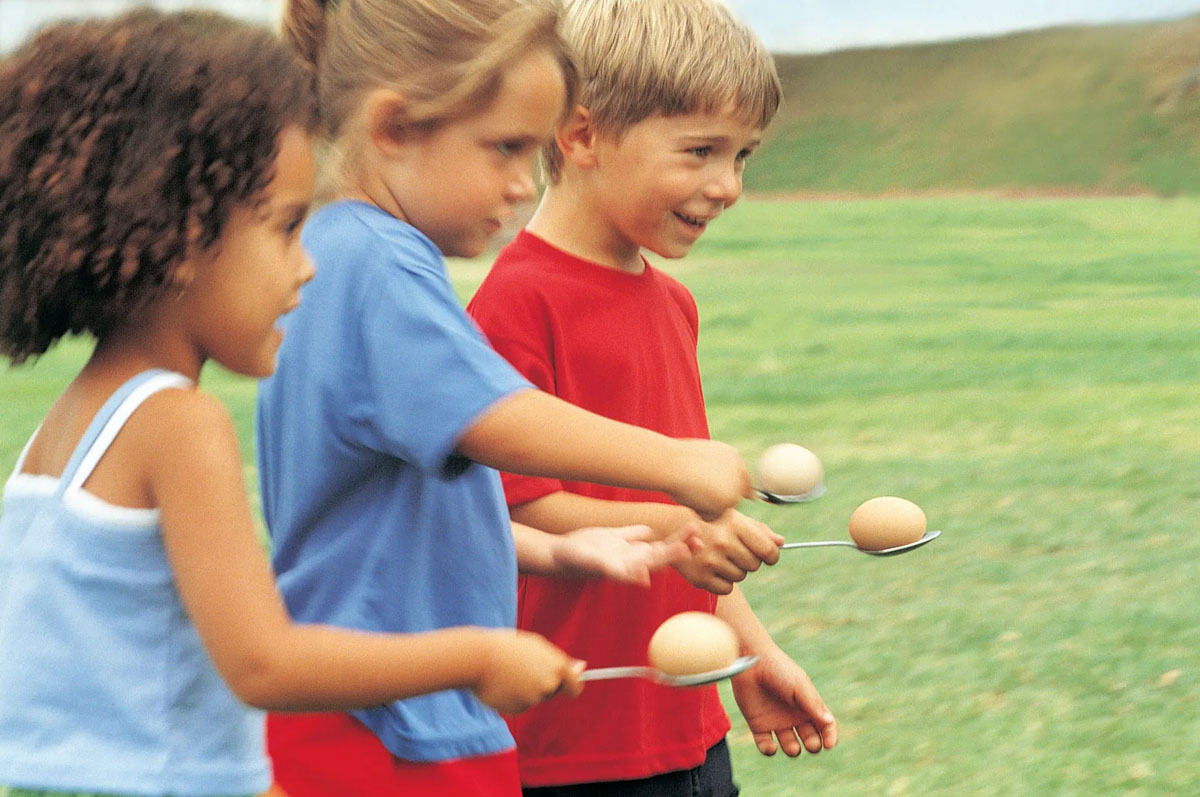Newsletters & Blog
March 2024
Egg-cellent Food & Fun

Cracking down on egg facts
Eggs are a great source of protein and can be involved in some fun activities, but where do they come from? Typically, the eggs that are purchased at the grocery store are grown from chickens. Geese, quail, and duck are other species of poultry that we eat the eggs from.
The chickens that lay eggs are known as hens. Hens can lay up to one egg per day, averaging one egg every 24-26 hours! However, this may change depending on the light outside. Chickens react to photoperiodism; a physiological reaction that plants and animals have to the amount of daylight and darkness present in a day.
During the winter months, egg production decreases and may even stop because the nights get longer and there is more darkness. The photoperiodism and reaction to more darkness, along with cooler temperatures, causes the hens to go through a process called molting. When a hen molts, her egg production stops, she loses her feathers, and then regrows new feathers. Hens, and all birds, go through the natural life cycle process of molting.
Egg-splore a new source of protein
Alongside meat, nuts, seafood, and beans, eggs are another great source of protein! It is important to add protein into your meals because it acts as a building block for your bones, muscles, cartilage, skin, and blood. Eggs are not only high in protein, but they also are a source of essential vitamins and minerals.
Eggs can be eaten in many ways. Whether they are hardboiled or sunny side up, eggs provide nutrition for our bodies to grow. Different parts of the eggs have different nutrients levels. The yolk, the yellow circle shaped part, is high in minerals and vitamins and lower in protein. The egg whites, the clearer portion inside of the egg, contains more high-quality proteins likes riboflavin and selenium, but has fewer minerals and vitamins. Eating both the egg whites and yolk leads to a more balanced nutritious diet.
- Eggs: From Hen to Home (Grades K-2)
- Eggs: Protein MVP (Grades 3-5)
- Eggs on the Menu (Grades 6-8)
- Don't Forget the Eggs! (Grades 9-12)
Yolking around with eggs
Eggs are not only delicious and nutritious, but they can bring the fun! With Easter right around the corner, here are some fun activities you can do with eggs:
Dyeing Eggs:
- Hard boil the eggs
- Combine ¼ cup vinegar and 8 drops of food coloring or Kool-Aid mix into 1 cup hot water.
- Let sit in mixture for 5-10 minutes.
- Take egg out of the dye mixture and put them on display!
Egg Hunt:
- A classic Easter activity is the Easter Egg Hunt! To do this, you have hide eggs (real or plastic) around the school, backyard, or playground. Sometimes there are clues or goodies hidden within the plastic eggs.
Egg & Spoon Race:
- Get active with the Egg & Spoon Race! This game can be done with real or plastic eggs (the real eggs tend to be a bit messy). Students get in a line with a spoon in hand and an egg placed in the spoon. They must race to the end with the egg on their spoon, and if it falls off they have to begin again!
Egg Drop STEM Challenge:
- Engage your students with this STEM activity that challenges the students to get creative. The goal of the project is to design a contraption that will protect an egg from cracking when it is dropped.
- Potential items that the students could use to create their egg-safety devices are cups, carboard, rubber bands, pool noodles… you name it and the students will find a way to make it work. This could be a great way to incorporate the use of recyclable materials to promote sustainable practices.
- The students' creation can be dropped from a multitude of heights to test who has the sturdiest egg protection device. You could start by dropping them at standing height, then those whose eggs survive can advance to a new height. This activity could continue until the last egg breaks.
- During the process, students can make predictions, record their findings, and compare with other classmates.
